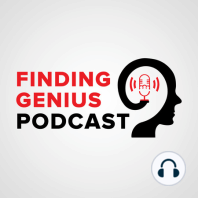38 min listen

Giant Viruses: Frank Aylward and the Beauty of Microbial Diversity
Giant Viruses: Frank Aylward and the Beauty of Microbial Diversity
ratings:
Length:
31 minutes
Released:
May 19, 2021
Format:
Podcast episode
Description
"The evolution of the nucleus may have initially occurred . . . because of this coevolutionary dynamic with giant viruses," says Professor Frank Aylward. He shares several mysterious tidbits of giant virus evolution and how these particles may have caused evolutionary pressures that produced everything from the silica shell of diatoms to cellular metabolism. Listen and learn What determines giant viruses, an interesting group of DNA viruses that infect eukaryotes, How scientists think microbial evolution led to their large size, What genomics and bioinformatics tells scientists about giant viral genomes and why they're still surrounded by mystery, and Why giant virus genome evolution indicates some exciting dynamics of viral indigenization. Frank Aylward is an assistant professor of biological sciences, at Virginia Tech. He specializes in microbial diversity and is fascinated by the abundance of microbes "that play critical roles in human health, the evolution of life on Earth, biogeochemical cycling, and the biosphere." Lately, he's focuses on giant viruses. These viruses are distinct for their size and their propensity to only infect eukaryotes. This means, for example, that while giant viruses and bacteriophage have different domain hosts, they're just as abundant, present in waters alongside marine bacteria, in soil, and even in freshwater. He shares numerous fascinating aspects of what these viruses tell us about our world. For example, they may have developed their size from an evolutionary effort of tricking amoeba into eating them. They practice biological mimicry, mimicking the look of the microbes that amoeba like to eat, so the amoeba will phagocytose it: the Mimi virus actually stands for mimicking microbe. Professor Aylward shares more about the natural history of these viruses, down to their connection with cellular nuclei and metabolism. Listen in for more about the magic in microbial diversity. Episode also available on Apple Podcasts: apple.co/30PvU9C
Released:
May 19, 2021
Format:
Podcast episode
Titles in the series (100)
BlockChainEDU – Interview with Dean Masley of BlockChainEDU.org: Today’s guest is Dean Masley of BlockChainEDU.org BlockChainEDU.org is a community of students & alumni across the world. They are creating bitcoin & block-chain clubs in their universities. In this interview,… by Finding Genius Podcast